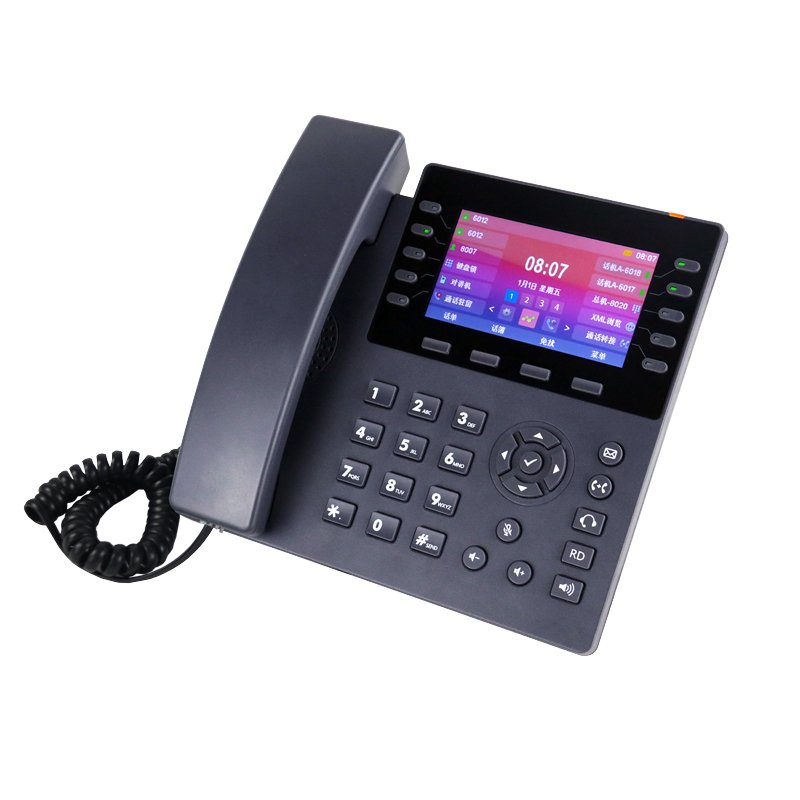The future of IP telephony looks promising, with several trends shaping its evolution:
Integration with Unified Communications (UC): IP telephony systems are increasingly becoming part of broader UC platforms, which integrate various communication channels like voice, video, messaging, and collaboration tools. This integration enhances efficiency and streamlines communication within organizations.
Cloud-Based Solutions: More businesses are adopting cloud-based IP telephony solutions due to their scalability, flexibility, and cost-effectiveness. Cloud-hosted PBX systems eliminate the need for on-premises hardware, reducing maintenance costs and providing easier access to advanced features.
Mobility and Remote Work: With the rise of remote work, there’s a growing demand for IP telephony solutions that support mobility and enable seamless communication across various devices and locations. Mobile apps and softphone clients allow employees to make and receive calls using their smartphones or laptops, regardless of their location.
Enhanced Security Measures: As cyber threats continue to evolve, IP telephony systems are implementing advanced security measures to protect against unauthorized access, eavesdropping, and data breaches. Encryption, authentication protocols, and intrusion detection systems are becoming standard features in IP telephony solutions.
Artificial Intelligence (AI) Integration: AI technologies are being integrated into IP telephony systems to enhance user experiences and productivity. Features like virtual assistants, speech recognition, and predictive analytics can automate tasks, improve call routing, and provide valuable insights for businesses.
5G Integration: The rollout of 5G networks will further enhance the capabilities of IP telephony by offering faster speeds, lower latency, and greater reliability. This will enable high-quality voice and video calls, even in bandwidth-intensive applications, and support emerging technologies like Internet of Things (IoT) devices.
Overall, the future of IP telephony is characterized by greater integration, mobility, security, and innovation, enabling businesses to communicate more effectively and adapt to evolving needs and technologies.
To effectively develop the market for IP phones, consider the following strategies:
- Identify Target Markets: Understand the industries and sectors where IP telephony solutions can offer the most value. Target businesses of all sizes, including small, medium, and large enterprises, as well as specific sectors such as healthcare, education, finance, and retail.
- Highlight Benefits: Educate potential customers about the advantages of IP phones over traditional landline systems, such as cost savings, scalability, advanced features (e.g., video conferencing, mobile integration), and improved productivity. Emphasize the flexibility and efficiency gained by adopting IP telephony solutions.
- Offer Customized Solutions: Tailor your IP phone offerings to meet the unique needs and requirements of different businesses. Provide options for cloud-based or on-premises solutions, various hardware models, and integration with existing communication systems or software applications.
- Provide Training and Support: Offer comprehensive training programs and ongoing support to help customers transition smoothly to IP telephony systems. Provide user guides, tutorials, and troubleshooting resources to ensure users can fully utilize the features and functionalities of their IP phones.
- Demonstrate ROI: Show potential customers the return on investment (ROI) they can expect from implementing IP telephony solutions. Highlight cost savings from reduced phone bills, increased employee productivity, and improved customer service capabilities.
- Focus on Security: Address concerns about the security of IP telephony systems by highlighting built-in security features, such as encryption, authentication, and firewall protection. Assure customers that their data and communications will be safeguarded against cyber threats.
- Build Partnerships: Collaborate with telecommunications service providers, IT resellers, system integrators, and other technology vendors to expand your reach and access new markets. Partnering with industry leaders can help enhance your credibility and access to potential customers.
- Stay Updated with Technology Trends: Keep abreast of the latest developments and trends in IP telephony technology, such as advancements in AI, 5G integration, and emerging communication protocols. Continuously innovate your product offerings to stay competitive in the market.
By implementing these strategies, you can effectively develop the market for IP phones and position your business as a trusted provider of reliable and innovative communication solutions.


